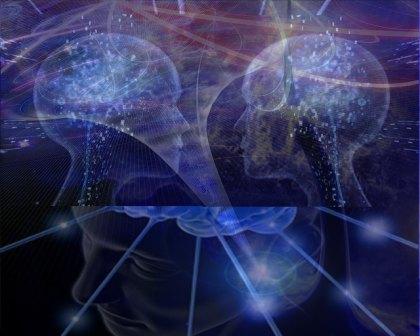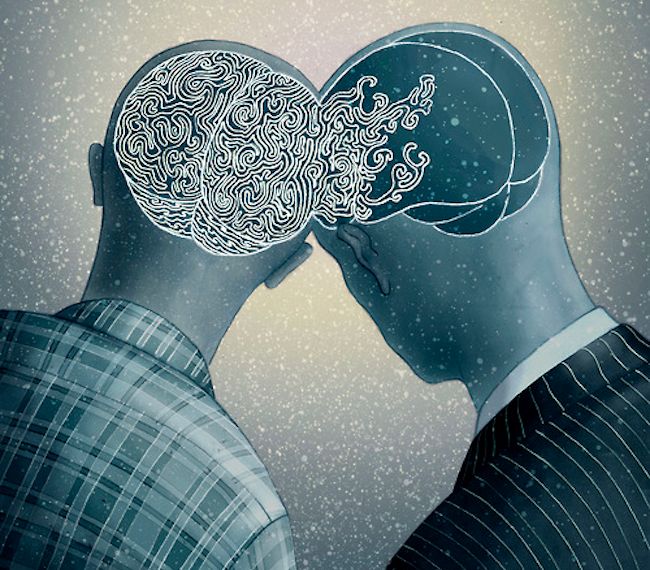Creating a Shared Understanding: How to Tap into the Collective Conscious


Have you ever thought about someone then suddenly they get in touch with you on the phone? Or, have you thought about something that would happen then it actually does? Some people would call it coincidence, while others prefer the term sixth sense. Whichever term is right to describe this occurrence, you probably want to know why exactly this happens?
Well, for one, it may be caused by something called a collective conscious. This is a term that is used by certain people in the scientific field to describe the practice of humans – and even animals – of sharing behaviors and ideas with each other through telepathic means.
The History of Collective Conscious
The idea behind a collective conscious was first presented in 1893 by Emile Durkheim, a French sociologist. His definition of the term was more inclined towards a shared understanding of certain morals and social norms that is based on people imitating others. By doing so, these imitated behaviors are then passed to one another or at least they agree on certain ideals in order to feel accepted.
This kind of behavior exhibited by a group is referred to them having a “shared mind.”
However, in the 1970’s, scientists began thinking about the collective conscious differently. They suggested that the shared understanding between species is actually passed on non-explicitly through telepathic or supernatural means.
One observation that led to this conclusion was the Hundredth Monkey Phenomenon. This was an idea put forth by Lyall Watson, a South African zoologist and ethologist. He formulated this idea together with scientific author colleague Lawrence Blair in 1975. Both Watson and Blair observed the behavior of Japanese macaque monkeys to support their claims.
In the 1950’s, a group of macaques in the island of Koshima were observed to wash sweet potatoes, and this skill was explicitly passed on to younger members of their group. Based on the observation of Blair and Watson, this exact behavior was then observed in a neighboring island among macaques who, most likely, have never been into contact with the group on the island of Koshima. This led the scientists to conclude that these monkeys were sharing a collective conscious.
This kind of behavior was also seen in blue tits, a small passerine bird that is recognizable by its blue and yellow plumage. What was observed with blue tits was that they taught themselves the skill of breaking into milk bottles and drinking the cream from the top.
This was observed in blue tits in Southampton in 2011. However, similar groups of this species in other countries throughout Europe as well as Asia were also observed to exhibit the same skills. The interesting thing about this is that these groups never met because blue tits are not migratory birds. This again led those in the scientific community to conclude that these birds were exhibiting telepathic behaviors which suggested that they were sharing ideas.
Science and the Collective Conscious
A study that proved the existence of this consciousness – and psychic abilities – in humans was published in 2010. However, the claims stated in the study garnered divided opinion and other reports even dismissed the results as nonsense.
The study was conducted by Professor Daryl Bem, a physicist from Cornell University. The conclusion of his research claimed that humans have the same psychic abilities as those seen in birds and monkeys mentioned previously.
Professor Bem investigated “psi” or parapsychology through a series of nine experiments. In one of the tests, students were shown a list of words they have to memorize. After that, they were asked to recall as many of the words they memorized as possible. They were also given a random selection of those words to type out.
The results showed that the students were much more adept at recalling certain words over others. Interestingly enough, the words that they remembered were the ones that they would later on type out. This suggested a future event that affected their ability to remember.
Another experiment was the showing of images to students. The test scenario was this: Students were shown an image featuring two curtains on a computer screen. They were then told that one of the curtains concealed a photo that was erotic in nature. According to Professor Bem, the students succeeded in choosing the concealed photo more often, which pointed to only something that can be explained by chance.
The interesting thing about the “photo concealed behind the photo” test was that the position of the images was randomly assigned by a computer that didn’t make a decision until after the student chose which curtain the erotic photo was concealed under.
For those who believe in the paranormal, this meant that students were influencing future events. However, a study conducted by researchers from the Edinburgh University found that they couldn’t replicate the results that Bem made.
Making the Connection to the Conscious
It’s probably not noticeable, but we’ve all been tapping into the collective consciousness frequently without us being aware of it. This is why the process of becoming aware is so important as it really makes a big difference in allowing us to get the most of this ability and really experience it wholly. When this happens, we can become closer to other people, and even strengthen bonds and relationship which is really good in bringing a lot of happiness and fulfillment into our lives.
The innate connection that is present between all beings helps drive forward the truth that there is something much more at work that is far beyond that understanding of modern science. It propels this mystical wonder that helps us to be more curious and passionate about life outside of the confines of the world we are living in.
Connections
As mentioned earlier, there are times when you have experiences that make you feel connected individually or collectively with other people even if you actually haven’t spoken to them. There are many different terms to describe this phenomenon, be it intuition, premonition, telepathy, serendipity, psychic, mystery, and even magic. Another interesting way to describe this phenomenon is the presence of invisible strings that we somehow touch in each other without knowing about it.
Even if a group is diverse and at times discordant, when this string is touched, it has a way of uniting people no matter how different they may be. It’s nice to think that each of has have this invisible string within us, and that we all have a capacity to touch others with these strings.
To put this clearly into a picture: Suppose you’re an Italian family that just moved into a new neighborhood. In you first few days in your new place, one of your children made friends with one of the neighborhood kids. Of course, once you’ve settled everything, you invite the new friend over where you have prepared a set of Italian dishes. What surprises you is that the friend your child made actually knows a lot about Italian cuisine because his family actually lived in Italy for quite some time. Can we call this accidental or was there something more to it?
This just goes to show that we, as individuals, are more connected to each other than we think. It’s just like the polar opposites of a magnet that seem to find each other and connect. So it really raises the question about how to we make this connection?
Of course, the presence of curiosity, interest, and relative openness in a person help make these connections happen. However, there is one thing that really drives this, and that is awareness.
Becoming More Aware
It’s not a secret that as you become more aware, you can discover a lot more about yourself. The best way to illustrate this concept is through an example. Imagine yourself being put in this situation: You’re tasked to close your eyes and perform a body scan for a couple of minutes. After the body scan, you’re then tasked to write the things you noticed about your body and give your reaction regarding the activity you were asked to do.
Most likely, the answers you jotted down will include things such as aches, tensions, temperature differences, and other bodily sensations. This is because you spent a lot of time being focused. This goes to show that the more you pay attention, the more you get to notice things. That being said, it’s clear that if you want to be more aware about yourself and your surroundings, you have to develop the capacity to really take notice. And by notice, this includes the obvious as well as the less important.
Here are some things that can get you started on your path towards becoming more aware:
- Take time to be silent. When you’re around people, try to to observe. Listen to what they’re saying and really pay attention. By doing just that, you can really focus on what they are saying and what they are doing. You become more than just a casual observer, and you really take better note of how they speak and act.
- Take things really slow. A good example for this is taking a walk around a city, be it the one you live in or are visiting. By walking around rather than driving, you really get a feel for the place and in some ways get to appreciate it a lot better.
- Try to remain curious. Curiosity allows you to discover things, not just about yourself, but the world you live in as well. Most of the time you’re concerned about making the right decisions that you fail to open up your mind to other things. For example, let’s just say that you’re really interested in someone. Naturally, you’re curious about what they are, what they do, and others. Now, think about applying that same level of curiosity in other aspects of your life. That just opens up a lot of possibilities for you to become more aware.
- Take note of patterns. This pertains to patterns in your own behavior as well as in the behavior of others. Not just that, you should also pay attention to patterns that occur during events. As you do that, try to take everything in and ask yourself how you make sense of them. Take note of how you understand these patterns.
- Take time doing nothing. Yes, you might think that doing nothing at all is a waste of time, but it actually results in you having creative bursts of energy. It’s in the silent moments where insights come to you. Yes, you may feel like you just became unproductive when in fact the silence makes room for ideas, emotions, and other creative processes to seep in.
By simply becoming more aware about yourself and others is the right path to tread towards tapping a collective conscious.



Comments are closed.